When you're working at an in-house content marketing team, it's easy to get wrapped up in the hard work of writing and producing content and forget all about the end goal: driving business results.
If you want your content to succeed, you need to bake results-driven thinking into every stage of your content pipeline. You'll get better results for your company if you consciously write every article with a focus on who you're writing it for, where you'll post the content to reach them, and how you'll share it with them.
In this article, we show you how to do exactly that.
A 3-step framework for performance-driven content marketing
Content marketing is all about nurturing an audience by producing content that they care about and that helps them out.
It's one thing to know that a deep understanding of your target audience matters, and it's another thing to design a content creation workflow that self-consciously molds your work into something that will truly help them, and that they'll want to share with others.
Hiten Shah created a straightforward, three-step framework for this exact purpose, back when he was starting KISSmetrics in 2008. According to Shah, you need to ask three questions:
1. How do you identify your target audience?
2. Where can you find them?
3. How do you engage them?
By determining who you're writing for before you even start writing, you give yourself a well-defined roadmap for the content you need to create.
By locating the places where your target audience hangs out, you establish a plan for making sure you're helping people with your content instead of just shouting words into the wind.
And, by knowing the best way to actually reach out to your audience at those places where they hang out, you'll build a community of like-minded thinkers around your constellation of content.
Let's dig into the best ways to execute each step of this framework, and look at how you can orchestrate it all in a single Airtable base.
1. Identify your audience
When you're sitting down and deciding what content to write, ask yourself: what kind of person is going to find the most value in this content, and why?
The more precisely you're able to define who your audience is, the easier it'll be to write effective content: you'll be giving yourself a roadmap for exactly what kind of content you need to write every day, since you know exactly whom you're trying to help.
You can drill down into your target audience and set yourself up to maximize your work's performance by splitting up your audience into three to four verticals that are likely to find the most value in your content. Doing this will allow you to stay laser-focused on who you're talking to, which can guide everything from the topics you discuss to the language that you use when discussing it.
For instance, if you're writing an article about how a high-end photo-editing app can improve Instagram pictures, you'll probably pick verticals like:
- Instagram celebrities
- photo production studios
- marketers
From here, you can drill down further by brainstorming particular keywords for each vertical to drive SEO: this is your guide to help you determine which terms you should include in your content to make it easily discoverable by the people who'll get the most out of it.
- for the Instagram celebrities vertical, you might brainstorm keywords like: "instagram glamor", "increase followers instagram", "more likes on instagram", and "professional quality insta"
- for the photo production studios vertical, you might brainstorm keywords like: "instagram professionals", "book instagram celebs", "apps for instagram producers", and "instagram production company tips"
- for the marketers vertical, you might brainstorm keywords like: "market better on instagram", "better ad photos", "improve ad quality", and "best apps for promoting on instagram"
The ideal keywords will have high volume and low difficulty: that is, there's a high volume of searches for those keywords, but it's relatively easy to rank near the top of the search results for those keywords. You can use a tool like keywordtool.io to get data on search volume for your chosen keywords, which will help you to find the most valuable keywords to optimize for.
In our Airtable base, you can use the Audience Verticals table to log the verticals you're targeting; then, enter data on your targeted keywords in the Keywords table. By linking these tables, you can easily track which keywords you want to rank for in each vertical, and which keywords will be the easiest for you to get the most traffic with.
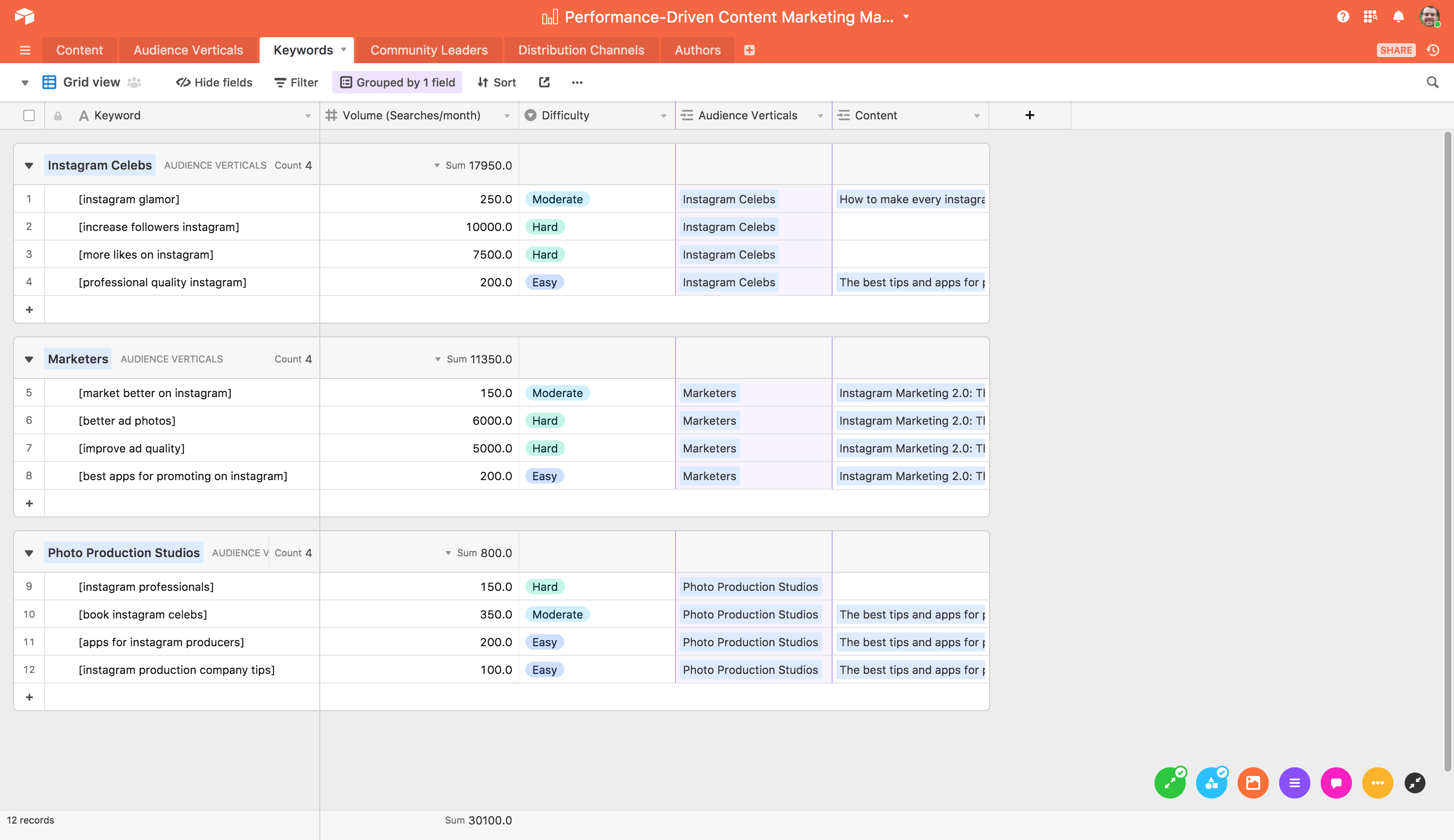
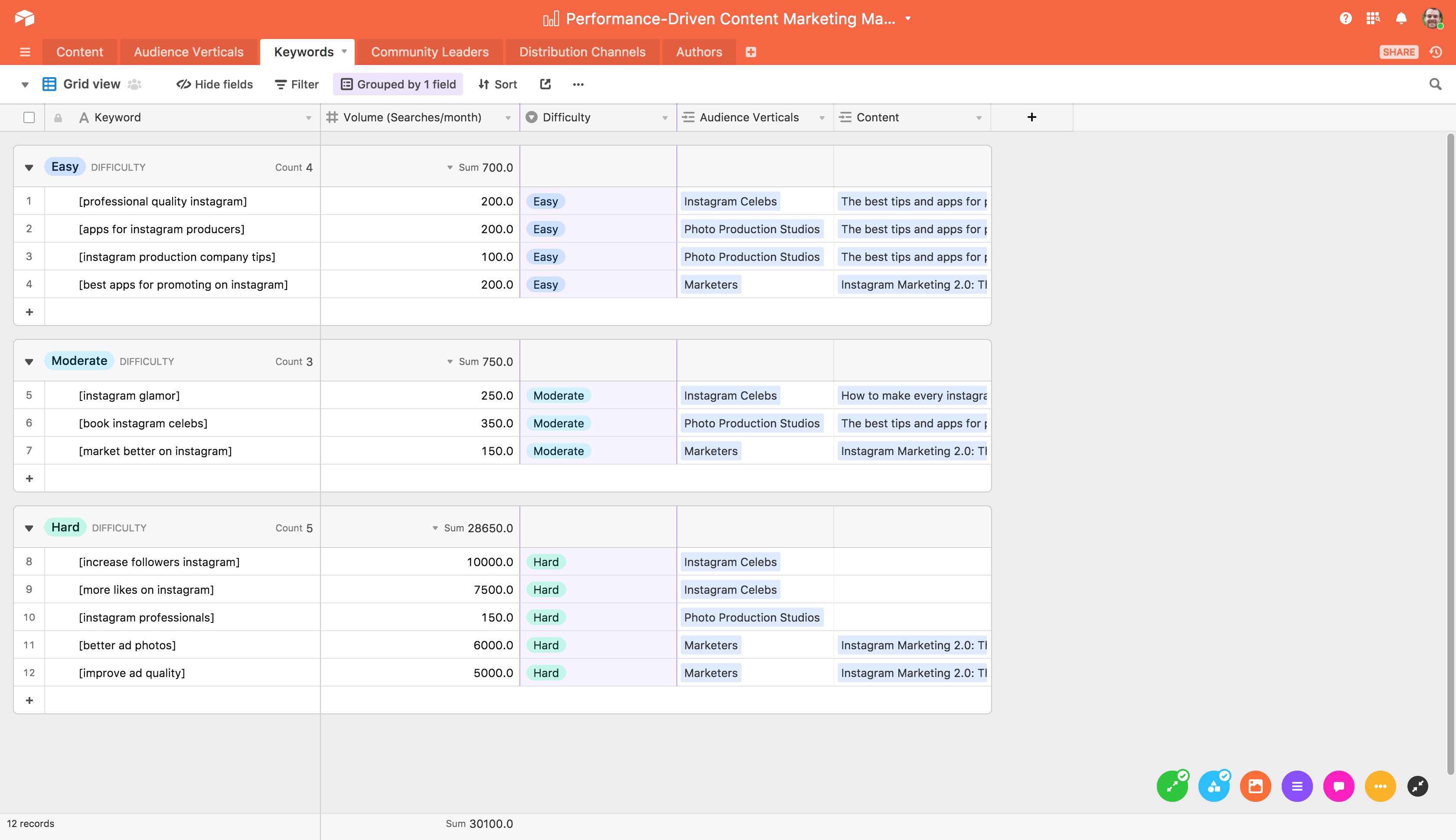
When you've nailed down your audience and the keywords to reach them, you'll be in a much stronger position to consistently produce content that speaks to people in a sustained and insightful way. The audience will guide your article ideas, and you won't have to reinvent the wheel with every new article proposal.
2. Identify where to find your audience
So now you have a roadmap for the content you need to be producing for your audience. The next step is to figure out where to distribute the content. Where is your audience hanging out online?
The goal behind content marketing is giving value away to potential customers. But your content doesn't exist in vacuum, and people won't just show up on your blog out of thin air: you need to understand where your potential customers are, and then figure out how to get your content there.
For these reasons, social and discussion-based sites are good places to start. This might include places like:
- interest-based forums
If you don't already have a good sense of where your audience hangs out, a simple Google search can do wonders. In our example, maybe you would search for “instagram fashion forums.” Or, you can dive into a particular community—maybe a fashion subreddit—and unearth more communities by seeing what other sites users are commonly linking to.
In this example Airtable base, all the places you want to publish content live in the Distribution Channels table.
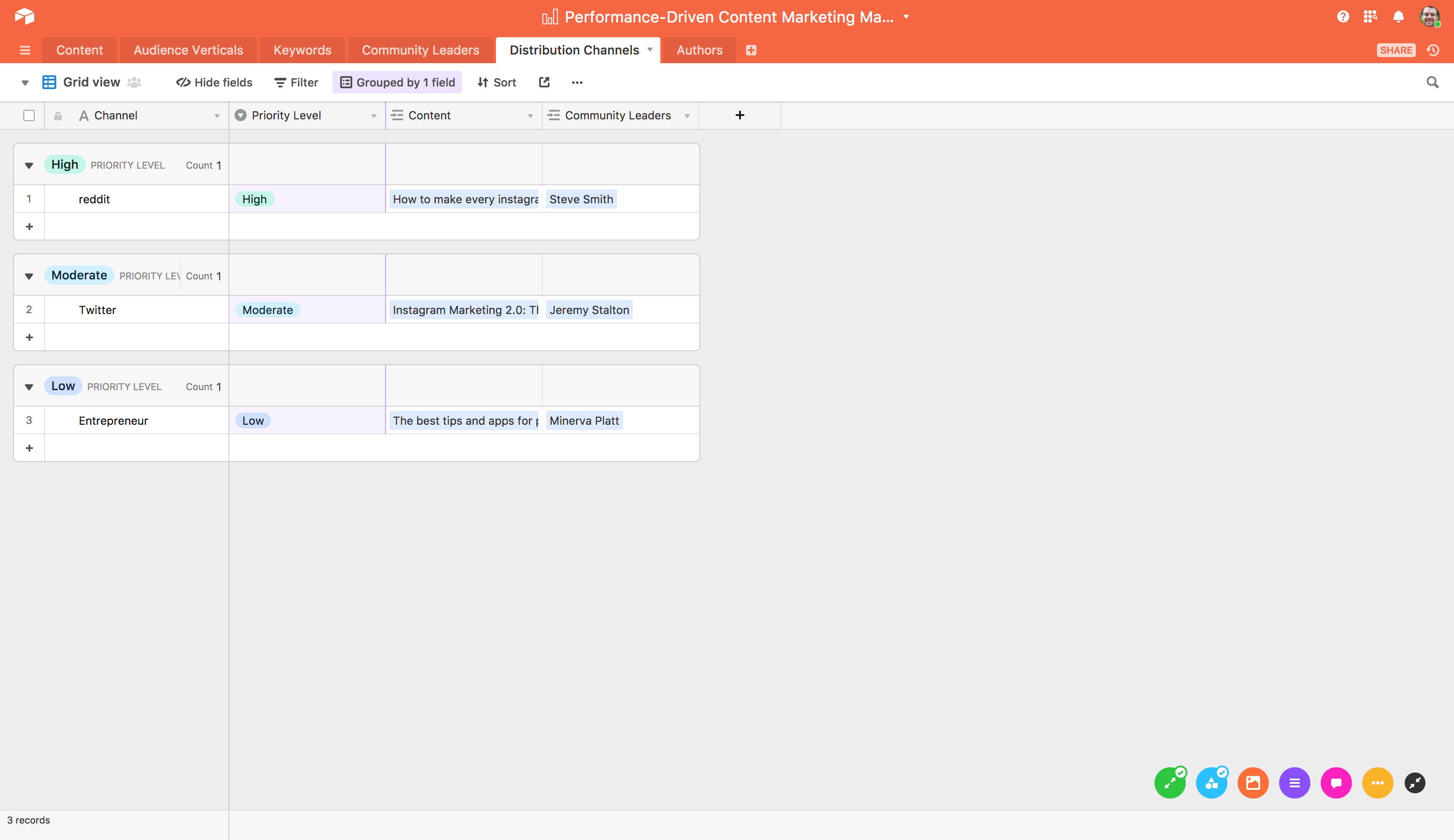
With your audience, SEO, and distribution strategy in place, you can draft up article ideas in the Content table and assign authors to them through the linked Authors table.
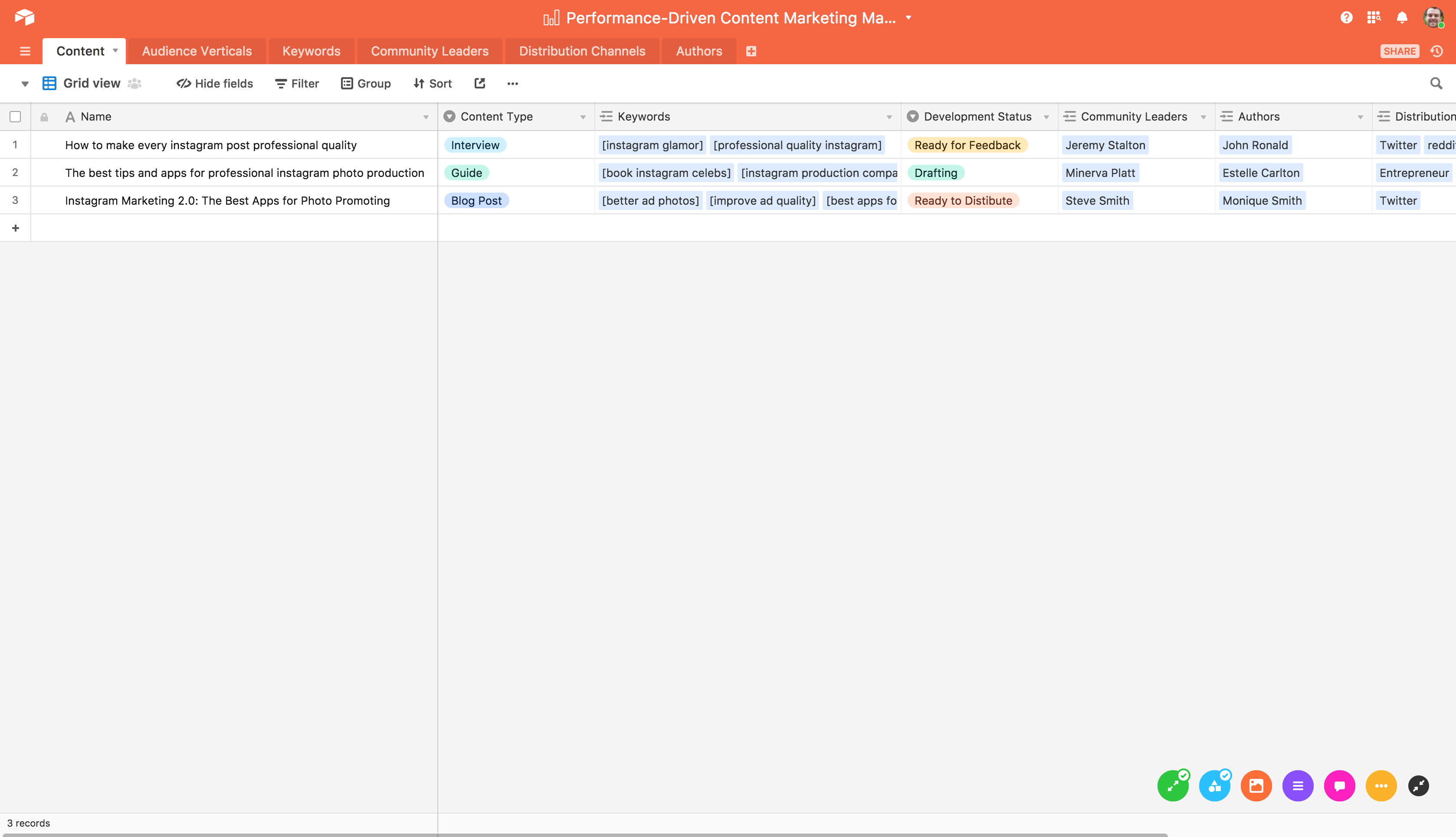
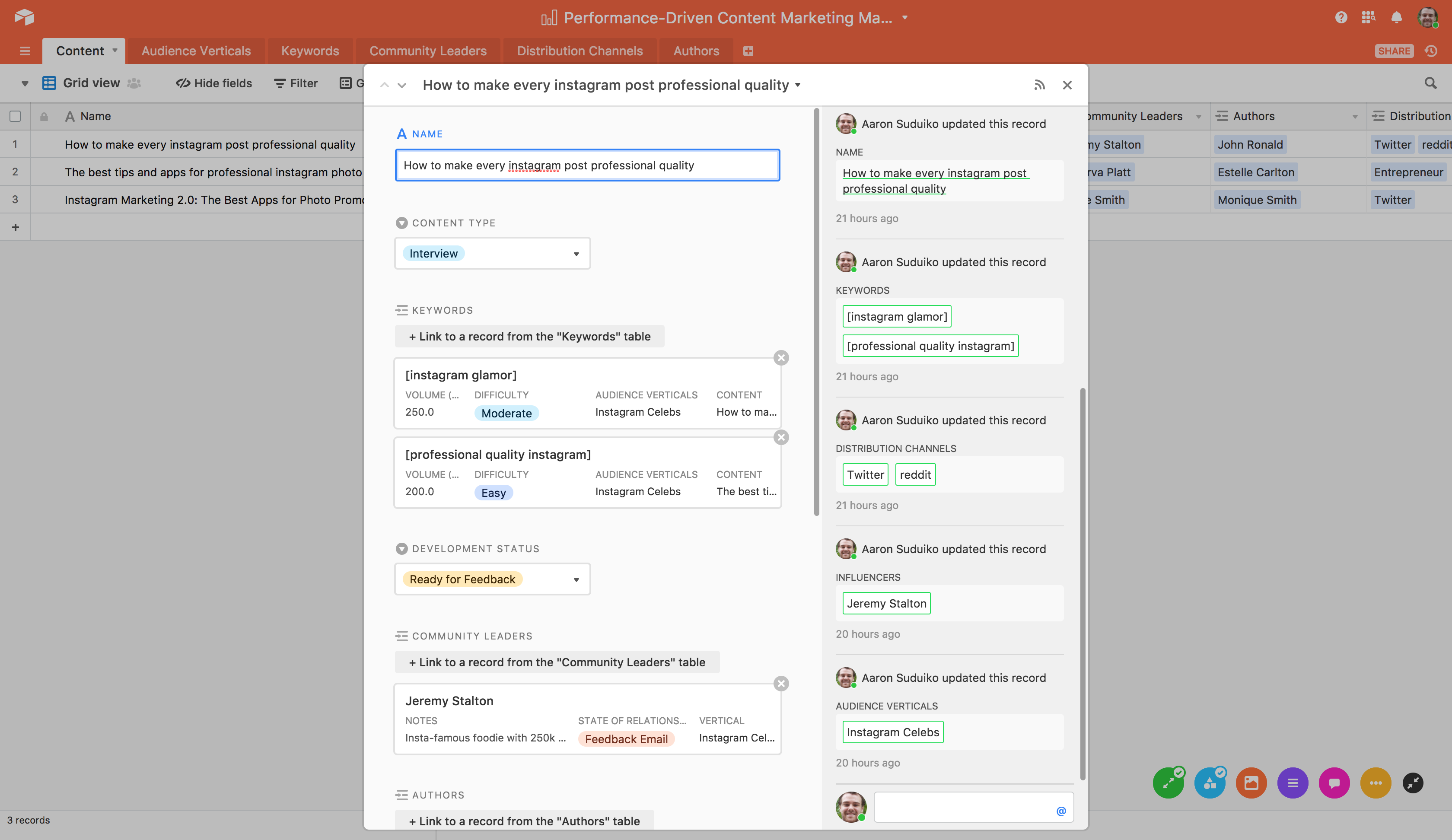
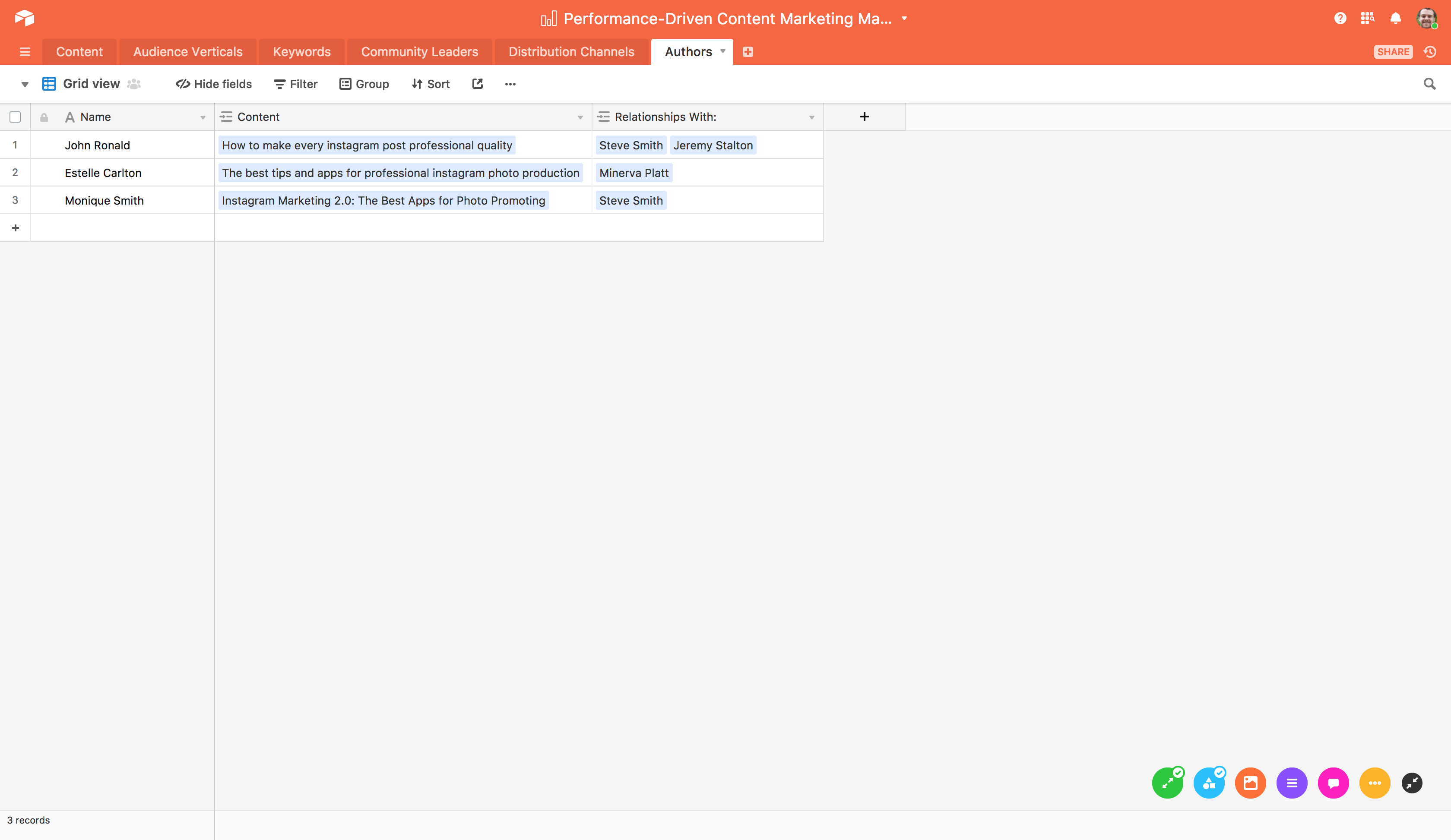
Content marketing isn't about advertising: it's about cultivating a community around your content. Finding where your audience hangs out online is critical to succeeding at that.
3. Identify leaders to help you engage your audience
Once you've found your audience's favorite online haunts, you need to determine the best way to engage them. Spamming links to an established community isn't a great way to get anyone to even read your content—let alone comment on it or share it.
Your goal is to foster dialogue and meaningful conversation within the communities that benefit from your content. One of the best ways to do this is by developing meaningful relationships with leading members of those communities, and leveraging those relationships to get your content circulated by people whose opinions your target audience respects.
You can't spam community leaders with links any more than you can spam your community: on the one hand, these leaders get countless unsolicited links all the time, so the odds that they'll look at yours is slim. On the other hand, spamming a leader is a lost opportunity: if you instead make a genuine connection with them and then ask them to read your content, you can gain a true, influential proponent who will want to help you and your content succeed.
Alex Turnbull, the CEO and Founder of Groove, has a simple checklist for ensuring genuine connections with community leaders. He discusses his strategy particularly in reference to Twitter leaders.
- Start by following them (e.g., on Twitter)
- Tweet at them twice
- Comment twice on their blog content
- Share their blog content twice
- Send them a personal email asking if they would be interested in a link to your content
- Send them a link asking only for feedback
- When the post is published, send it to them and ask them to share it
These leaders have established, often vertical-specific communities that trust them. This means that they won't share just anything, but, if you can establish rapport with them, they can boost your content to your exact target audience.
And that kind of rapport comes from contributing to conversations these leaders care about in meaningful ways. Don't just comment “Great article!” at the bottom of a leader's article and move on to the next step—make the effort to leave a comment that sincerely continues the conversation that the leader is trying to start with their article.
When it's time to start cultivating and leveraging relationships with community leaders, head to the Community Leaders table in your Airtable base to track which people you're pursuing as leaders in each of your verticals.
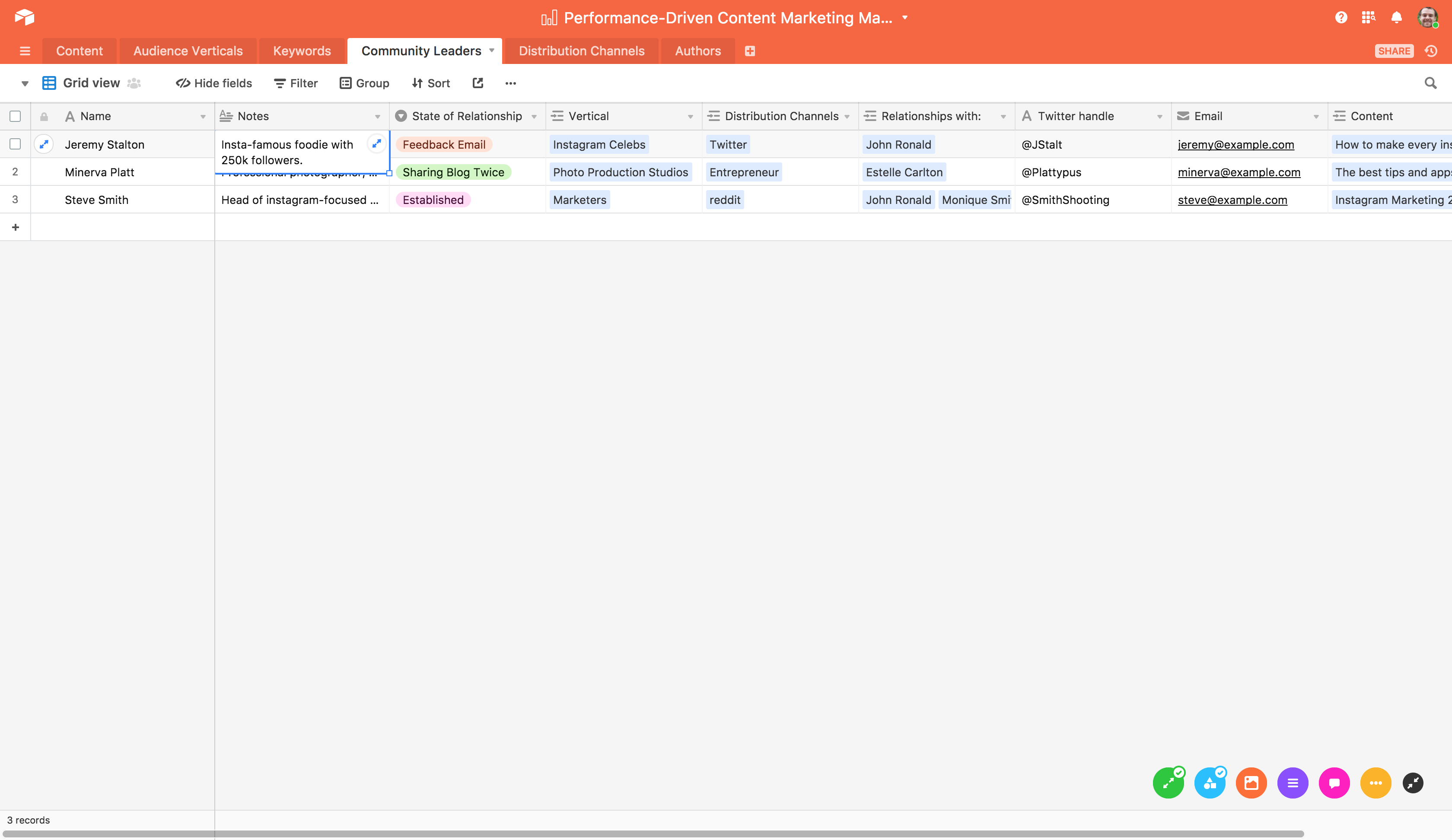
Fostering relationships with community leaders is a great way to start conversations around your content, generating new ideas that can help everyone in your audience—and that can serve as the seeds for future content creation!
Turn your content marketing workflow into a results-driven strategy
With the right framework in place, you'll no longer be shooting in the dark with each piece of new content: every article and outreach attempt to a community leader will be deliberately crafted as part of a carefully engineered strategy to speak directly to those who will most benefit from your content.
This kind of comprehensive strategy will make sure your content is genuinely contributing to community dialogues—and it will set you up to foster the kinds of relationships that ultimately drive even more traffic to your company's blogs, landing pages, and purchase pages.